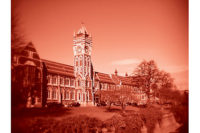Co-sponsored by Agilent Technologies, the RF Materials Test Laboratory is part of the ACI's Electronics Manufacturing Productivity Facility.
Many factors can affect the performance of RF components and printed circuit boards (PCBs). The choice of assembly materials, the physical size and shape of traces and connections, and the layout of components and packages on a PCB can all affect the performance of an RF system for the better or the worse.
For example, very high frequency signals have very short wavelengths and can be effectively radiated by any conductor or trace that has a physical length equal to a fraction of the signal's wavelength. Unnecessarily long traces, or poorly routed traces, can act as very effective antennas that will radiate portions of the RF power outward from the board. Excessively large and poorly shaped solder joints may also serve as radiating elements when they are used in SHF or EHF systems. This unintended radiation can cause different subcircuits and sections of a PCB to become electromagnetically linked in a phenomenon known as "crosstalk."
Assembly materials also play a role in the performance of RF components and PCBs. The choice of solder, flux, substrate, conductor, dielectric, adhesive and coating can enhance or degrade performance.
The RF Materials Test Laboratory can help assemblers identify potential RF problems early in the design stage. For more information, call the ACI at 610-362-1200 or visit www.aciusa.org.


